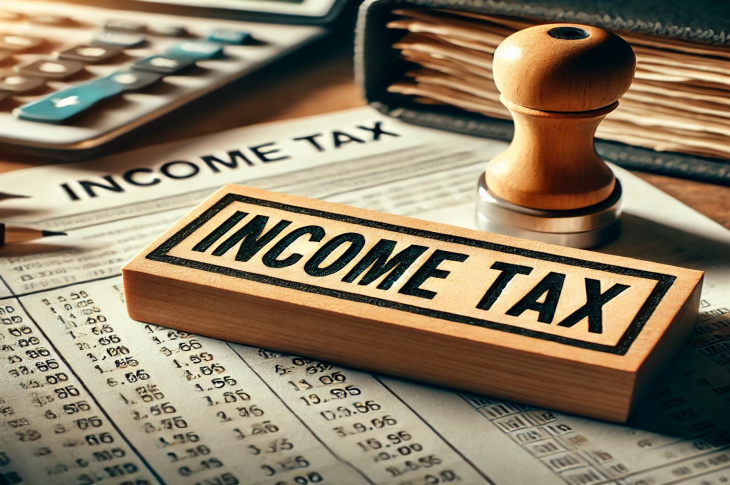Income Tax Slabs for FY 2024-25 & AY 2025-26: Updated Rates for New & Old Regimes
Introduction
Income tax is a direct tax imposed on the income of individuals, companies, and other entities, and it plays a crucial role in the country’s revenue system. India follows a progressive tax system where the tax rate increases as the income rises, ensuring fairness and equity. The Income-tax Act, 1961, provides for two tax regimes: the Old Tax Regime, which offers various deductions and exemptions, and the New Tax Regime, which features lower tax rates but fewer deductions.
With the recent announcements in Budget 2025, significant updates have been made to the income tax slabs for the Financial Year (FY) 2024-25 and Assessment Year (AY) 2025-26. This guide will help you understand the latest income tax slabs, compare the new and old regimes, and make informed decisions regarding your tax planning.
What is an Income Tax Slab?
Income tax slabs are predefined ranges of income, with each slab attracting a different rate of tax. As an individual’s income increases, they move into higher tax brackets, resulting in higher tax liabilities. This system ensures a progressive tax structure, where higher earners contribute more to the nation’s revenue.
Income tax slabs are periodically revised during the annual budget to reflect the economic conditions and inflationary trends. The Budget 2025 introduced notable changes, especially in the New Tax Regime, aimed at providing relief to taxpayers and simplifying the tax structure.
Budget 2025 Highlights:
-
No income tax for income up to Rs. 12 Lakhs due to an increased rebate under the new regime, now set at Rs. 60,000.
-
Direct Tax Code to be presented in Parliament next week.
-
Modified slab rates for the New Regime for FY 2025-26 (AY 2026-27).
Income Tax Slabs for FY 2024-25 (AY 2025-26) Under New Regime
The New Tax Regime introduced in Budget 2024 brought significant changes to the income tax slabs, which are further updated in Budget 2025. The new rates are designed to simplify tax filing and provide relief to middle-income earners.
| Income Tax Slabs | Tax Rate |
|---|---|
| Up to Rs. 4,00,000 | NIL |
| Rs. 4,00,001 - Rs. 8,00,000 | 5% |
| Rs. 8,00,001 - Rs. 12,00,000 | 10% |
| Rs. 12,00,001 - Rs. 16,00,000 | 15% |
| Rs. 16,00,001 - Rs. 20,00,000 | 20% |
| Rs. 20,00,001 - Rs. 24,00,000 | 25% |
| Above Rs. 24,00,000 | 30% |
Key Features of the New Tax Regime (FY 2024-25):
-
Default Tax Regime: The new regime is the default option. Taxpayers who prefer the old regime must file Form 10-IEA.
-
Basic Exemption Limit: Rs. 4 lakhs, applicable to all taxpayers regardless of age.
-
Rebate under Section 87A: Available for incomes up to Rs. 12 lakhs, resulting in zero tax liability due to a rebate of Rs. 60,000.
-
Surcharge: The highest surcharge rate under the new regime is capped at 25%, compared to 37% in the old regime.
Income Tax Slabs for FY 2024-25 (AY 2025-26) Under Old Regime
The Old Tax Regime remains unchanged from previous years and continues to offer various exemptions and deductions under different sections.
| Income Slabs | Individuals Below 60 Years & HUF | Individuals Between 60 To 80 Years | Individuals Above 80 Years |
| Up to Rs. 2,50,000 | NIL | NIL | NIL |
| Rs. 2,50,001 - Rs. 3,00,000 | 5% | NIL | NIL |
| Rs. 3,00,001 - Rs. 5,00,000 | 5% | 5% | NIL |
| Rs. 5,00,001 - Rs. 10,00,000 | 20% | 20% | 20% |
| Above Rs. 10,00,000 | 30% | 30% | 30% |
Surcharge and Cess:
-
Surcharge Rates:
-
10% for income between Rs. 50 lakh and Rs. 1 crore.
-
15% for income between Rs. 1 crore and Rs. 2 crore.
-
25% for income between Rs. 2 crore and Rs. 5 crore.
-
37% for income above Rs. 5 crore (reduced to 25% under the new regime).
-
-
Health and Education Cess: 4% of the total tax payable.
Comparison: Old vs New Tax Regime for FY 2024-25 (AY 2025-26)
| Income Slabs | Old Tax Regime | New Tax Regime |
| Up to Rs. 2,50,000 | NIL | NIL |
| Rs. 2,50,001 - Rs. 3,00,000 | 5% | NIL |
| Rs. 3,00,001 - Rs. 5,00,000 | 5% | 5% |
| Rs. 5,00,001 - Rs. 8,00,000 | 20% | 5% |
| Rs. 8,00,001 - Rs. 12,00,000 | 20%-30% | 10% |
| Rs. 12,00,001 - Rs. 20,00,000 | 30% | 15%-20% |
| Above Rs. 20,00,000 | 30% | 25%-30% |
Which Regime Should You Choose?
Choosing between the old and new tax regimes depends on your financial situation and investment habits.
-
Opt for the New Regime if:
-
You prefer lower tax rates with minimal documentation.
-
You don’t have significant deductions under sections like 80C, 80D, or HRA.
-
You have income up to Rs. 12 lakhs, where the rebate ensures zero tax liability.
-
-
Opt for the Old Regime if:
-
You have significant tax-saving investments and deductions.
-
You pay EMIs on education loans or home loans.
-
You claim HRA, LTA, or other allowances.
-
Calculating Tax Under Both Regimes
Example 1: Tax Calculation Under Old Regime
X's taxable income: Rs. 8,00,000
| Income Slabs | Tax Rate | Tax Amount |
| Up to Rs. 2,50,000 | NIL | - |
| Rs. 2,50,001 - Rs. 5,00,000 | 5% | Rs. 12,500 |
| Rs. 5,00,001 - Rs. 8,00,000 | 20% | Rs. 60,000 |
| Total Tax | Rs. 72,500 | |
| Cess (4%) | Rs. 2,900 | |
| Total Tax Payable | Rs. 75,400 |
Example 2: Tax Calculation Under New Regime
X’s taxable income: Rs. 8,00,000
| Income Slabs | Tax Rate | Tax Amount |
| Up to Rs. 4,00,000 | NIL | - |
| Rs. 4,00,001 - Rs. 8,00,000 | 5% | Rs. 20,000 |
| Total Tax | Rs. 20,000 | |
| Rebate (Section 87A) | Rs. 20,000 (Zero Tax) |
Exemptions & Deductions: Old vs New Regime
Not Claimable Under New Regime:
-
HRA (House Rent Allowance)
-
LTA (Leave Travel Allowance)
-
Standard deductions (other than the revised standard deduction of Rs. 75,000)
-
Interest on housing loan for self-occupied property
-
Section 80C deductions (like PF, LIC, ELSS)
Available Under New Regime:
-
Standard Deduction of Rs. 75,000
-
Employer’s contribution to NPS (Section 80CCD(2))
-
Interest on home loans for let-out properties
-
Deduction for family pension (increased to Rs. 25,000)
Conclusion
The updates in Budget 2025 significantly reshape the tax landscape, offering more clarity and choices for taxpayers. While the new regime simplifies the tax process and provides relief through lower rates and rebates, the old regime remains advantageous for those leveraging multiple deductions and exemptions.
Taxpayers should carefully analyze both regimes, considering their income structure, investments, and financial goals. Using a tax calculator to compare liabilities under both regimes can be a practical approach to choosing the most beneficial option.
Stay updated with future changes, especially with the Direct Tax Code expected to be presented soon, which may bring further reforms in the taxation system.
Frequently asked questions
When is the due date to file an Income Tax Return for AY 2025-26?
When is the due date to file an Income Tax Return for AY 2025-26?
Typically, the due date is July 31 of the assessment year, unless extended by the government.
Can I switch between the old and new tax regimes every year?
Can I switch between the old and new tax regimes every year?
Salaried individuals can choose their preferred regime each year while filing their ITR. However, individuals with business income can switch only once.
Is the standard deduction available in the new tax regime?
Is the standard deduction available in the new tax regime?
Yes, from FY 2023-24 onwards, a standard deduction of Rs. 75,000 is available under the new tax regime.
What happens if I forget to file Form 10-IEA for the old regime?
What happens if I forget to file Form 10-IEA for the old regime?
If you do not submit Form 10-IEA, you will default to the new tax regime.
Is there any difference in tax slabs for women?
Is there any difference in tax slabs for women?
No, there are no separate tax slabs for women in India. The slabs are uniform for all individuals.
Do NRIs get the same rebates under Section 87A?
Do NRIs get the same rebates under Section 87A?
No, NRIs are not eligible for rebates under Section 87A.
Trending
Frequently asked questions
When is the due date to file an Income Tax Return for AY 2025-26?
When is the due date to file an Income Tax Return for AY 2025-26?
Typically, the due date is July 31 of the assessment year, unless extended by the government.
Can I switch between the old and new tax regimes every year?
Can I switch between the old and new tax regimes every year?
Salaried individuals can choose their preferred regime each year while filing their ITR. However, individuals with business income can switch only once.
Is the standard deduction available in the new tax regime?
Is the standard deduction available in the new tax regime?
Yes, from FY 2023-24 onwards, a standard deduction of Rs. 75,000 is available under the new tax regime.
What happens if I forget to file Form 10-IEA for the old regime?
What happens if I forget to file Form 10-IEA for the old regime?
If you do not submit Form 10-IEA, you will default to the new tax regime.
Is there any difference in tax slabs for women?
Is there any difference in tax slabs for women?
No, there are no separate tax slabs for women in India. The slabs are uniform for all individuals.
Do NRIs get the same rebates under Section 87A?
Do NRIs get the same rebates under Section 87A?
No, NRIs are not eligible for rebates under Section 87A.



Ask a Lawyer